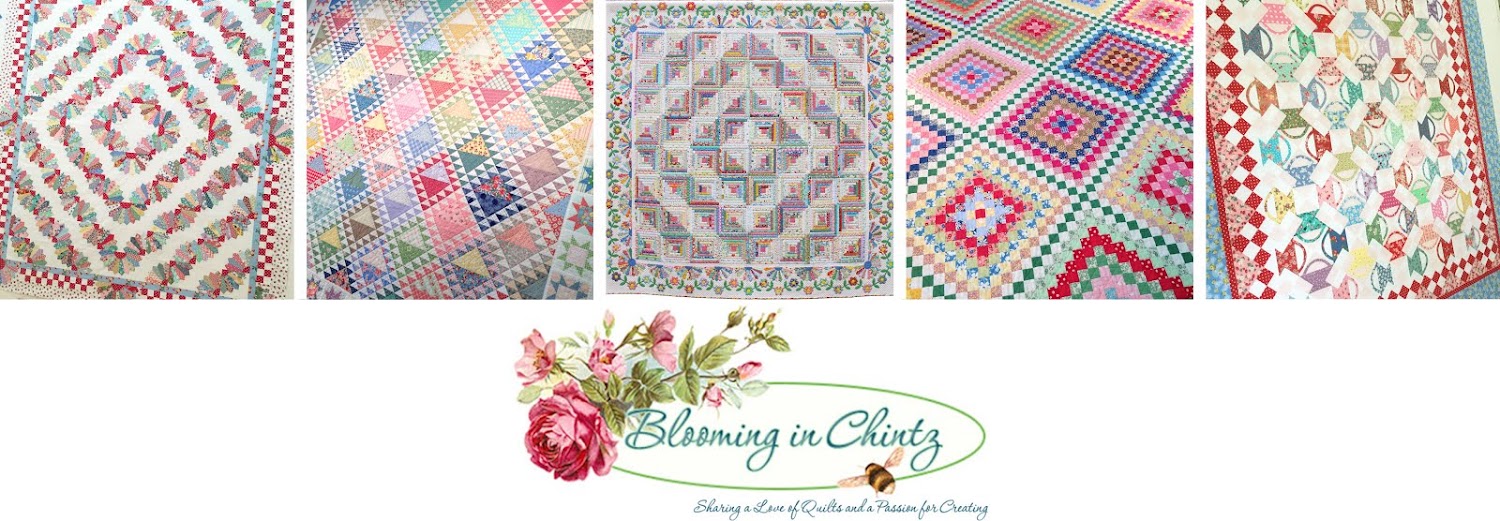My latest quilt pattern, Sweet Lizzie, is currently available as a kit through Keepsake Quilting. The pattern is also available from me through my Etsy shop. The quilt uses RJR Fabrics Afternoon in the Attic, which is full of flowery, romantic pastel fabrics. The pattern also includes the master foundation patterns as a second option to foundation-piece the three- and four-inch variable star blocks and the three-inch snowball blocks.
Unfortunately, it has just come to my attention that there is a typo error on page 8. Obviously, this is one of the biggest fears of a pattern designer! I do proofread everything at least a dozen times, and triple-check all of my measurements, but this one little fraction slipped passed me. I apologize to everyone who has purchased the pattern and am hoping that anyone who has started making the pattern will see this blog post or my post on Facebook. For the Etsy patterns I sell directly, I have made the change already.
IF YOU PURCHASED THE SWEET LIZZIE KIT OR PATTERN, THE CORRECTION TO PAGE 8 HAS BEEN MADE BELOW:
3" Variable Square--Star Points--Cut four 1-5/8" squares, then cut diagonally once--yields 8 triangles.
If you purchased the kit or pattern and would like an updated pdf version of page 8, please email me at bloominginchintz@earthlink.net and write PAGE 8 in the Subject Line and I will email it to you. My apologies for any inconvenience this may have caused!
Here are some additional pictures of the quilt:
And a big thank you to Joanne Flamand of Alberta, Canada who quilted Sweet Lizzie for me. She did a beautiful job!
And for those of you who think that I have given up my blog altogether, I haven't! This has been a crazy and unpredictable year so far and I have just not had the motivation to write about much of anything. A few months ago, we had to cope with the unexpected loss of my mother-in-law the night we got home from our 30th anniversary vacation. Thankfully, we were able to say our sad good-byes just in time, as though she were waiting for us to come home. It was a shock the way it all played out, but life won't be the same without her. She was truly one of the best "mother-in-laws" I could have asked for and I am grateful that she and I had such a wonderful relationship over the last 34 years. Even though she never took up sewing, she absolutely loved and adored quilts and everything handmade. She loved everything I ever made or gave her and I know she truly appreciated all of it. She would have been 90 this week.
I've also been trying to play "catch-up" on my own quilts and things that have been left unfinished for way too long. I've made a little progress, which I will show in another post. But the reality is, I don't think I will ever "catch up!" So it's been a matter of setting priorities and juggling my time between work and quilting.
Our custom apparel business my husband and I own has also been extremely time-consuming this year as well. We are currently in the process of expanding and growing and while it is all very exciting, it has taken up much more of my quilting time. So when I do have a moment to spare, you better believe it is in front of my sewing machine and not in front of the computer! I do have a couple of things I plan to share in further detail on my blog that I have already posted pics of on both Instagram and Facebook, it's just a matter of taking the time to write.
To those of you who are still following along with me, thank you for your loyalty and tremendous patience! I hope everyone is enjoying their summer so far. And again, my apologies for the pattern error! Happy Quilting!















